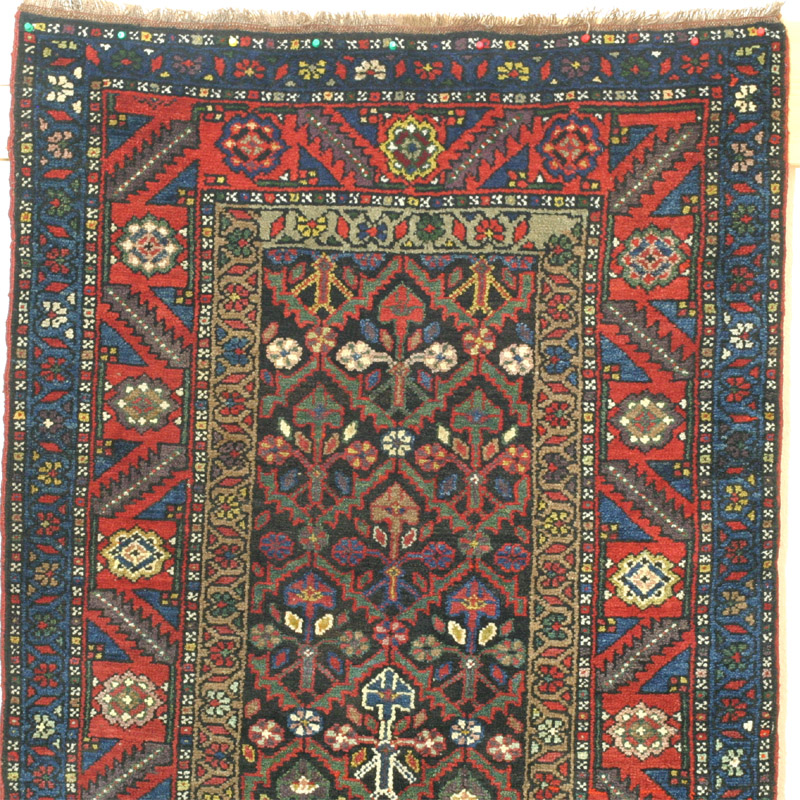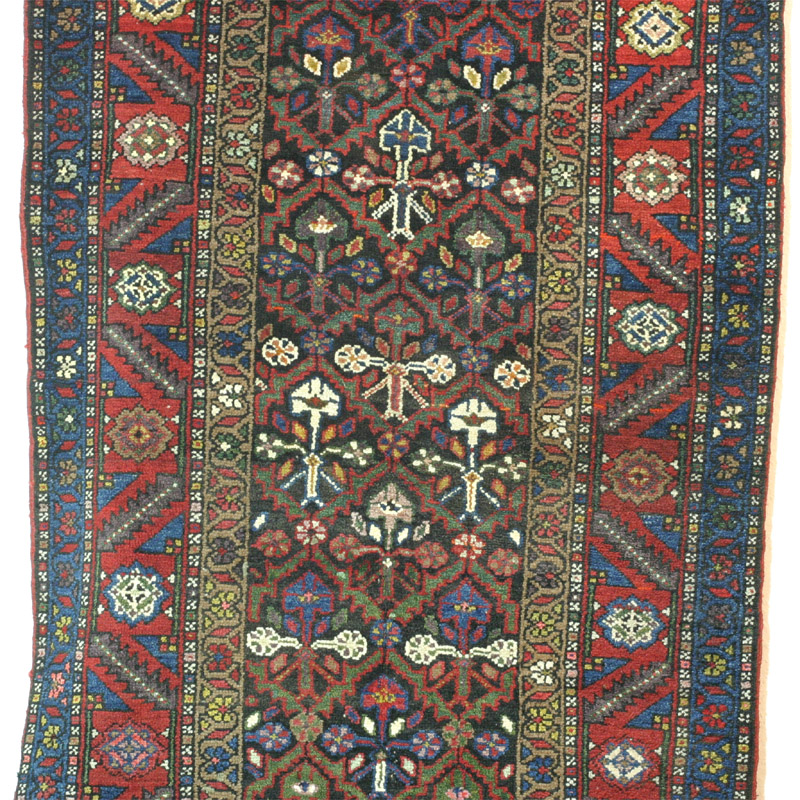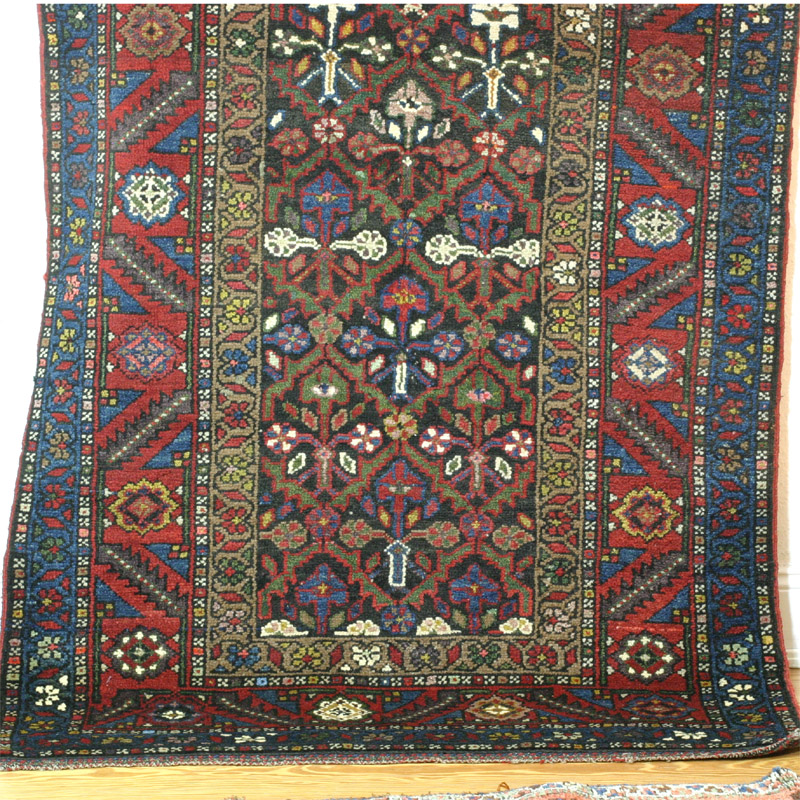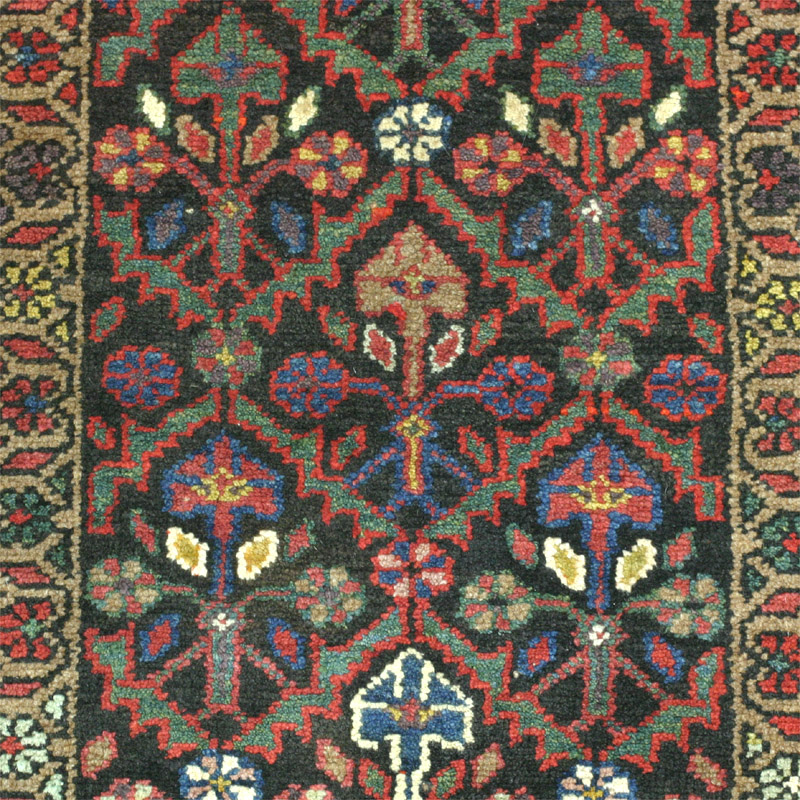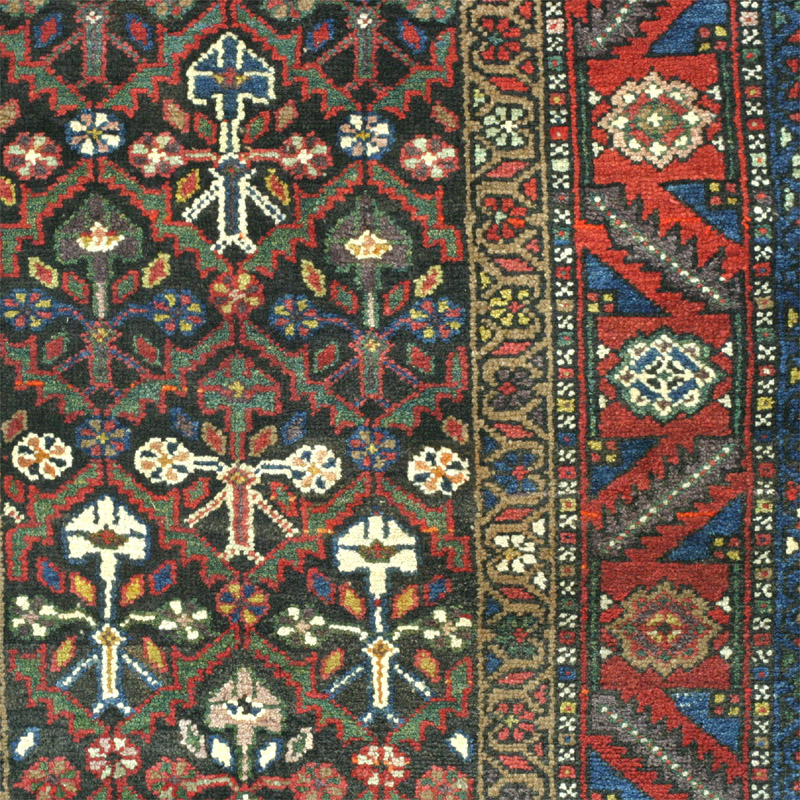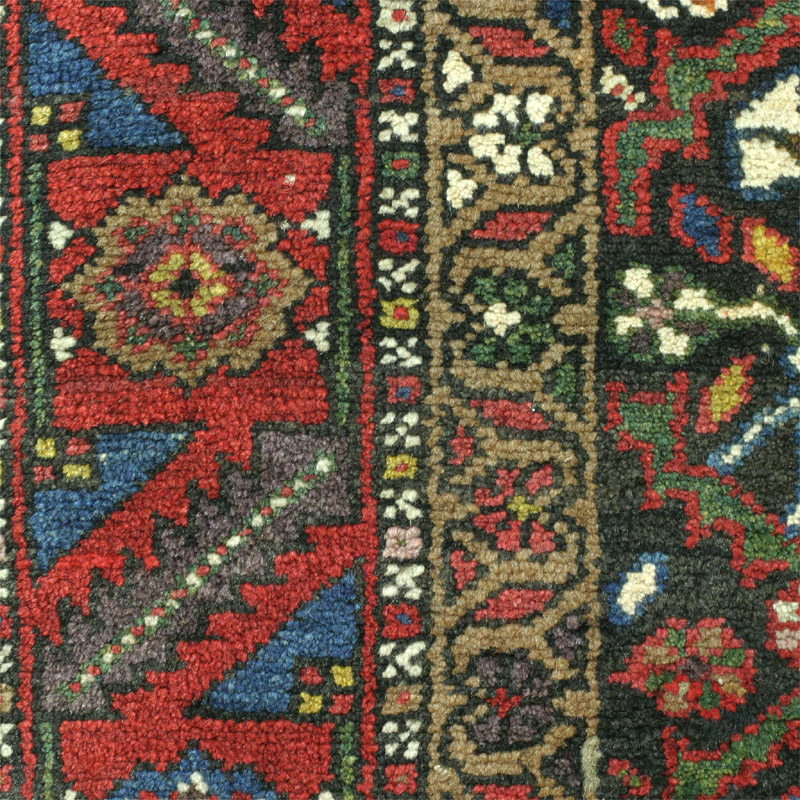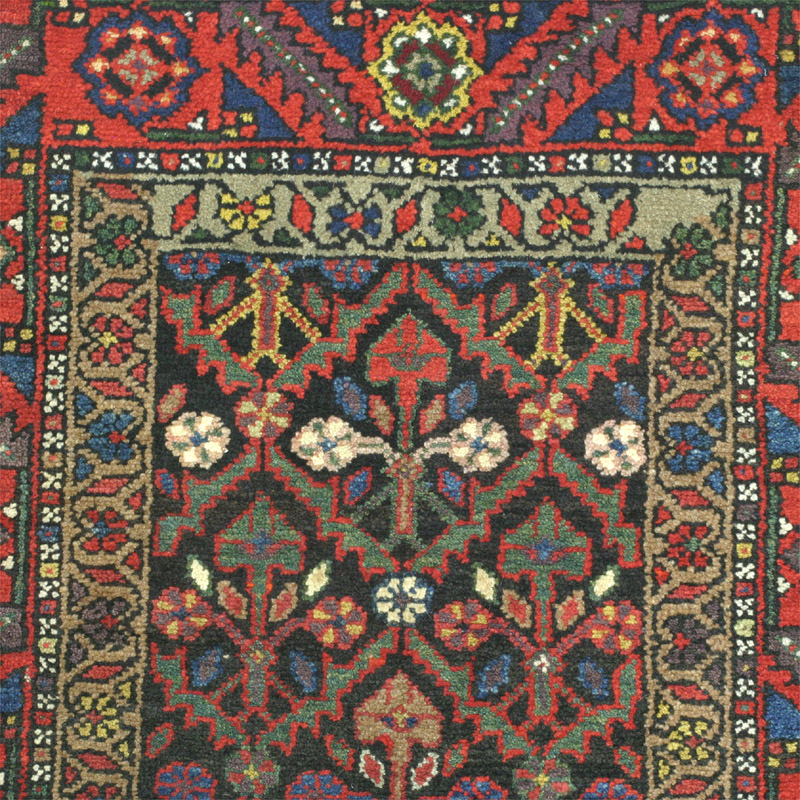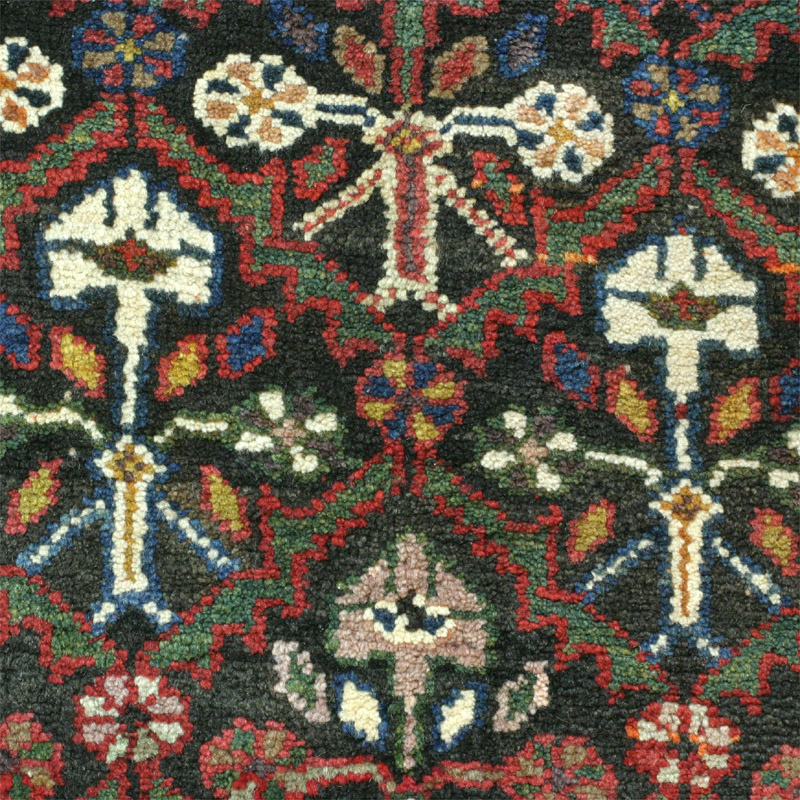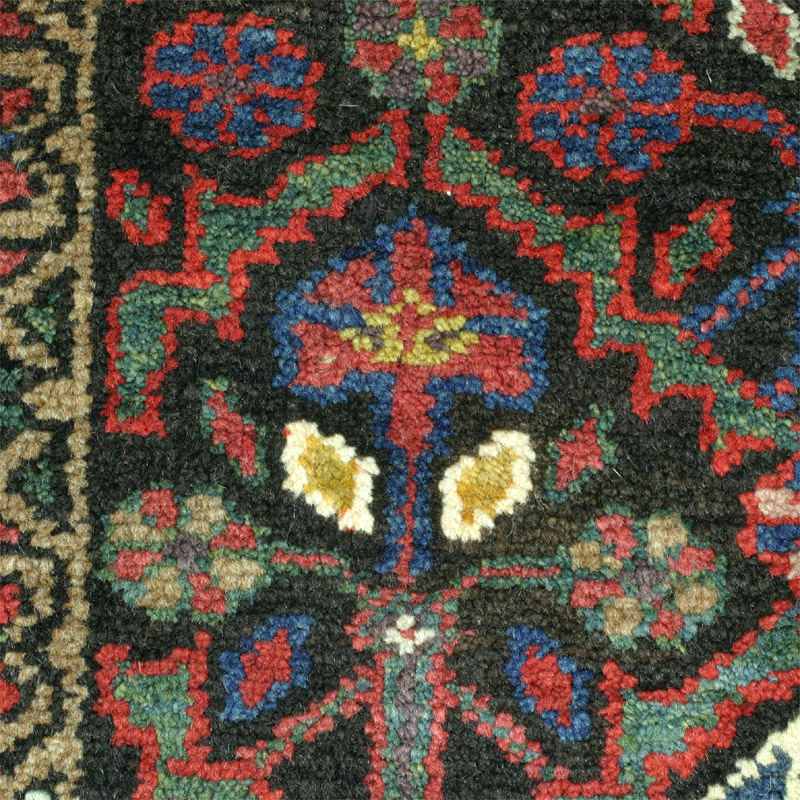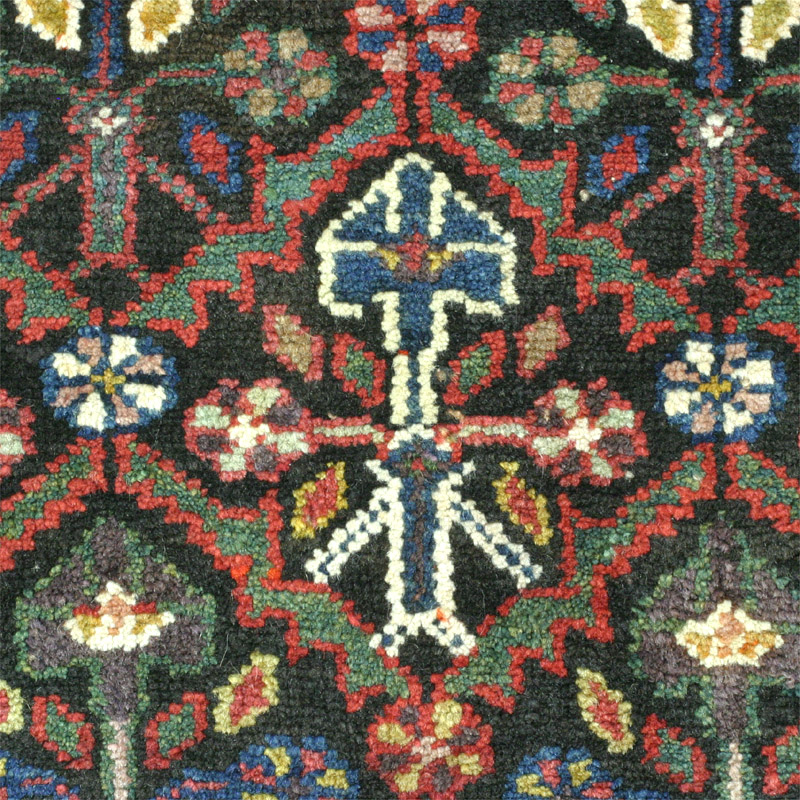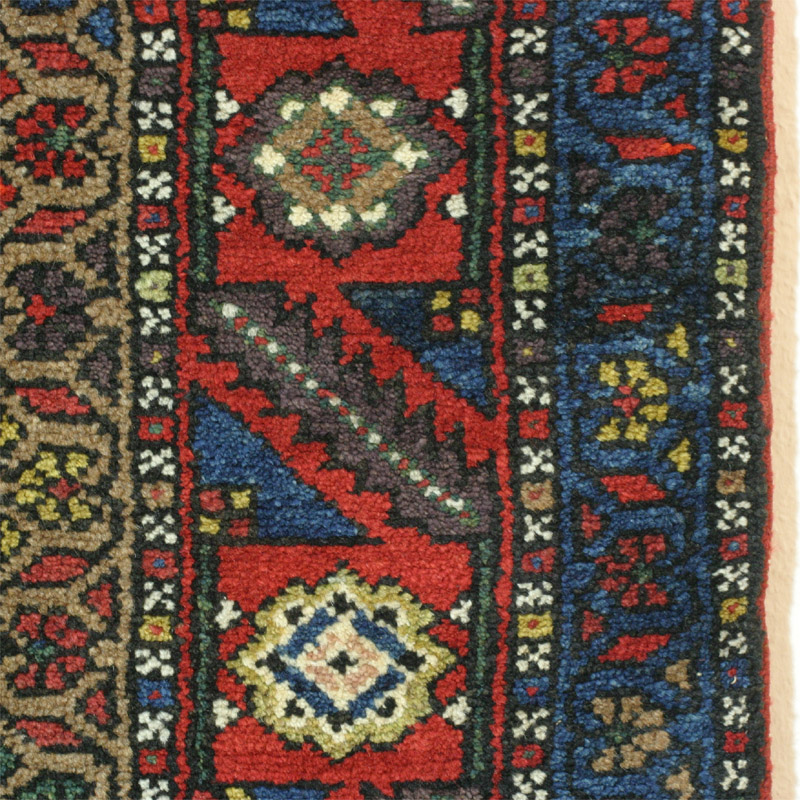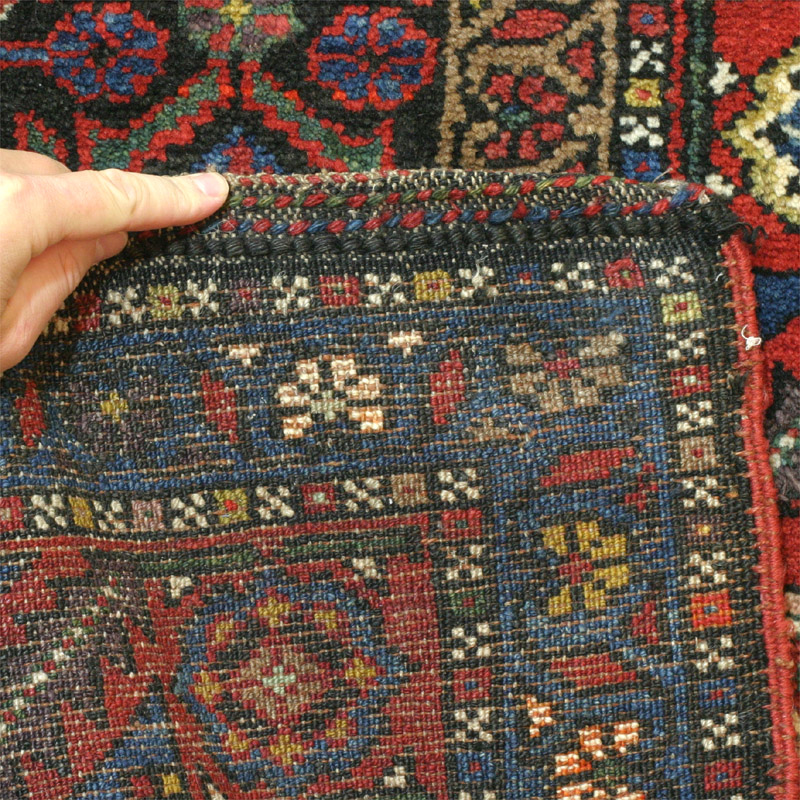A Kurdish single-wefted rug with all-wool foundation, probably from Shirishâbâd, (Serisabad) half way between Hamadan and Sanandaj (Senneh). A floral lattice design, each diamond containing a flower or arrangement of flowers. Edwards, in his classic book The Persian Carpet, calls a similar pattern in a Shirishâbâd rug reproduced as fig. 129 a 'tulip design'; here, we have more likely simplified palmettes, or even poppies (check out a recent Turkotek thread on poppies as design motives). Another piece for comparison is the Willborg Shirishabad Rug included in JBOC's Notes on Oriental rugs which has a similar diagonal lattice formed by thin serrates leaves, only that the flowers it the Willborg example are much larger (and the design airier). Another similar example with a different type of flower can be found in a Shirishâbâd rug on J.P. Willborg's site, which apparently has rather low pile, and has been shortened. Compare it to the immaculate state and full pile of this one! Regarding the age, I guess the rug could have been made around 1920–1930.
The border system in this rug is quite wide, nearly as wide as the narrow field. The bold main border shows an angular scroll of serrated leaves (a design common in the borders many Caucasian rugs) alternating with large rosettes flanked by blue triangles (blossoms in profile?) which define a kind of square negative space space for them. The large rosettes remind me a bit of those found in Talish borders. The secondary borders show the ubiquitous Kurdish scrolling rosete border, the outer on blue, the inner on camel-coloured ground.
The diamonds formed by the diagonal lattice contain a central flower, the stem and roots of which look a bit like a human with extended arms. Bending symetrically sidewards are smaller flowers that look like eight-petalled blossoms found in Luri rugs, especially where petals alternate colour as they sometimes do.
What is interesting in this well executed design is the independence of form and colour. As in many Kurdish designs, the colours sem to cycle through the forms, accentuating different parts of the pattern. This is especially so for the parts rendered in white which stand out against the deeply saturated red and green and the dark brown ground.
The palette is quite wide, with dyes that are deeply saturated and are all natural, with two exceptions confined to the very top of the rug (see below). Especially lovely are a lively mottled medium green used in the lattice, and a beautiful madder-based aubergine. The madder is a a dark brick shade with some abrash. The yellow comes in two shades: a saturated gold shade playing into mustard, and a light yellow-green. There is also a lighter madder-based rose shade. The medium to dark indigo blue dominates in the outer border and in the triangles flanking the serrated leaves in the main border. They, as well as the serrated leaves that are always aubergine, are exempt from the colour rotation seen both in the field and in the main border rosettes. The inner secondary border has a camel-coloured base, a dye also used in the flower motifs. The abrashed dark brown of the ground seems the actual colour of sheep wool, at least I can see no discernable corrosion as you often find in browns and blacks of old rugs. Furthermorethere are bits of a cinnamon-orange, probably yellow overdyed with madder (certainly not synthetic).
The central two serated leaves in the top main border use another aubergine which looks synthetic; it appears that near the completion of the rug, the weaver ran out of her lovely aubergine and used another synthetic dye. This is not very obvious (I discovered it only at prolonged inspection) and does not distract from the successful synthesis of colour throughout the rug. The same dye is also used in a few rosettes in the top outer secondary border. The top rosette between the aforementioned serrated leaves uses in its centre a mahogany red found nowhere else in the rug, which I suspect is also synthetic.
The rug measures 7ft.8in. x 3ft.4in. (235 x 102 cm). Warps and wefts are tan to light brown wool, no warp depression, flexible and meaty handle, long dense pile (ca. 9 mm) and excellent glossy wool. Willborg's little Hamadan book has a reference example: No. 41 Shirishâbâd Kurd has structural similarities even if it shows a very different design (a medallion reminding of older Bijar rugs). It equally has a single-wefted all-wool foundation like the one shown here, with a knot count of Vert. 33/10cm, Hor. 24/10cm = 79.200 knots per square meter (kpsm) and a V/H ratio of 1:1.37.
In this rug, warps and wefts are hight to medium brown wool, the knot count is Vert. 27/10cm, Hor. 26/10cm = 70.200 knots per square meter (kpsm) and a V/H ratio of 1:1.03.
Selvages are two cords wrapped in red wool, seems original. The lower end has a one inch wide lilim end with tow lines of brocadong, one alternating red and blue, the other red and green and a fat line of dark brown twining before the pile starts (visible in the last image). On the top end, there is half an inch of brown kilim with no decoration.
Immaculate, no discernable wear, no loss, stains, holes, etc., just clean, lush pile.
